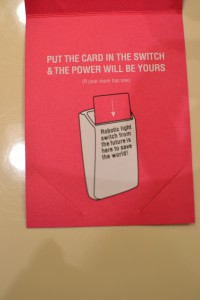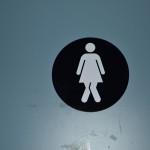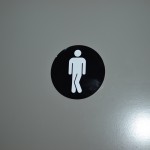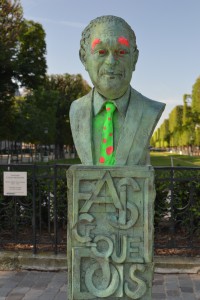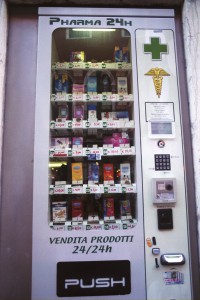There’s no such things as bad weather—only bad clothes.
This Norwegian saying seems apt, given the Canadian winter we’ve been having. I’ve been donning my heaviest Ottawa gear, layering up each time I set foot outside. Surprisingly, even though it’s much further north, it’s warmer in Bergen. Because Bergen is on the west coast of Norway, it receives the warming effect of the Gulf Stream. Because Bergen is much further north, and it’s winter, it also has very short days.
I was in Bergen for a few days over the January-February month change for a conference at the University of Bergen. While the conference itself was a fascinating multidisciplinary international affair, here I’ll focus on the trip itself. Travelling in winter, especially north (who thought that was a good idea?), with Mercury in retrograde, one should expect travel delays. My flight from Toronto to Bergen via Amsterdam, landed about half-an-hour late. While that doesn’t sound like much of a delay, it made the difference between landing in waning afternoon light and landing in full dark. Thanks to the assistance of a man on the bus, I was able to get off at the correct stop and start walking towards the University.
Have you ever tried navigating an unfamiliar, steeply hilled, medieval city, at night, with slushy snow descending onto cobblestones? No? Well, I wouldn’t recommend it. Such cities emerged organically, so streets meander at odd angles, and signage is sometimes scarce. Walking uphill, on slippery snow, over rounded cobbles, with the extra weight of my knapsack, I kept telling myself, you must not fall! I was glad that the steepness of many sidewalks was acknowledged by adjacent metal handrails. After much effort, and many questions to other pedestrians, I found the conference site; unfortunately, by this time, it had been abandoned in favour of dinner.
After further lost stumbling, walking uphill both ways, I found my hotel. Phew! I was glad to relinquish my luggage and have a hot shower. Looking at the conference schedule, I realized that I could still make it to dinner. Exhausted, I had a cab to take me to the foot of Mount Fløyen so I could catch the Fløybanen funicular railway up to the mountaintop restaurant. The ride takes about seven minutes and includes three stops. Impressive! While I could see that there were spectacular views from this height, a howling wind was driving snow into my face, so it hardly seemed a time to take photos. I was glad to get inside the lovely Nordic restaurant, complete with fireplaces and light wood finishing, where I met up with my compatriots for some pleasant dinner conversation. I was also glad to meet someone else staying at my hotel, so we could help each other get back to home base.
Saturday morning, she and I met at breakfast (included with hotel accommodation) and wound our way up the hill towards the University. It was my first look at the city in daylight and it was awesome. Classic Nordic, with the old city nestled between mountains. It was still overcast, and barely daylight, and I spent the rest of the day indoors at the conference.
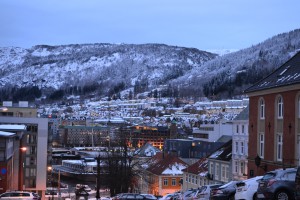
Bergen, early winter morning
That evening, however, I ventured out with a couple of colleagues, one of whom had been in Bergen for several days and had discovered the secret of navigating the downtown. If one walks a couple of blocks in the right direction, one emerges from the cramped and vertical medieval streets, out onto an open pedestrian boulevard, offering lovely views and easy access throughout the city. We had dinner in the amazing Bryggen district, the historic waterfront.
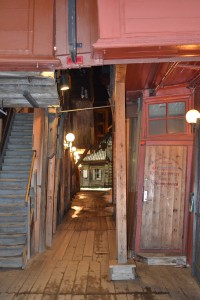
In the Bryggen, some buildings are a little less than square
Sunday morning—I slept in. But once underway, I had a wonderful day of sightseeing. I started by wandering the length of the Vågen, the harbour that cuts deep into downtown Bergen, on the same side as my hotel. I finally found what I was looking for: the Hekse Steinen, or Witch Stone. This memorial was dedicated in 2002 to the memory of the 350 witches burned during the Norwegian witch trials. Anne Pedersdotter and others were executed in Bergen, at this stone’s location, but it marks the memory of others who met similar fates throughout Norway, especially during the Finnmark trials further north. The inscription translates as: 350 bonfire victims to miscarriage of justice 1550-1700.
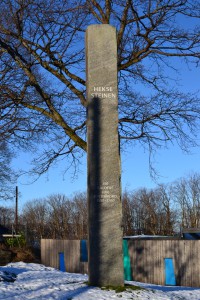
The Hekse Steinen, or Witch Stone memorial
I spent the rest of the day wandering around the old downtown. Bergen was pronounced a city by King Olaf III in 1070. Although part of the wharf dates to 1100, it wasn’t until about 1360 that it was developed as a trading centre by German Hanseatic League merchants. Merchants developed the city and the wharf, but in 1754, the area was transferred back to Norway.
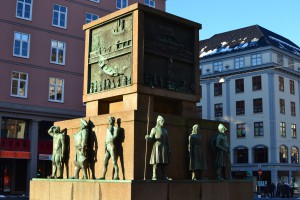
The Town Square, in the Town Square
The buildings of the Bryggen, or wharf, are all wooden, which unfortunately has led to many fires—but they keep rebuilding. The great fire in 1702 seems to have done the most damage, but the most recent was in 1955. This dramatic history is notable in the profusion of visible fire fighting hoses, visible charring on the sides of some buildings, and information posted on one building currently under renovation. In 1979, the Bryggen was declared a UNESCO World Cultural Heritage site.
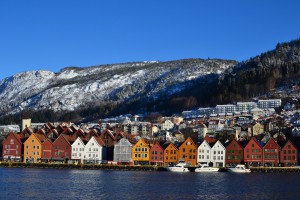
The Bryggen historic wharf
Further along this side of the Vågen lies the Bergenhus (Bergen Fortress or Castle), which includes the Rosenkrantztårnet (Rosenkrantz Tower) and Håkonshallen (Håkon’s Hall). Håkonshallen was built in 1261 by Håkon Håkonsson in celebration of his son’s coronation and wedding, although it has seen many purposes over the centuries. While part of the Rosenkrantztårnet dates to the same period as the Håkonshallen, the existing tower was added in 1560 to enhance the city’s defenses.
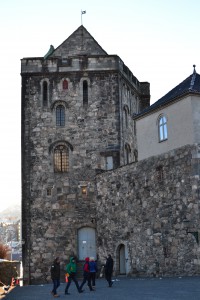
Rosenkrantztårnet of the Bergenhus
While there were other activities and museums I had considered visiting, by this time, the short day was winding down. I stopped for an early supper at Dickens, took a few more retreating pictures, then returned to the hotel to pack for my morning flight.
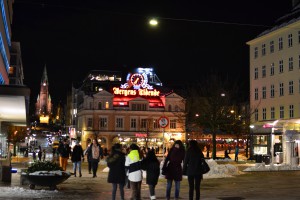
Dickens restaurant in the main square of Bergen
I got to the Flesland airport in good time for my 10:15 a.m. to Amsterdam. Unfortunately, due to freezing rain and/or hail in the Netherlands, the incoming flight was delayed, and so there was no plane to take passengers back to Schiphol airport. My 10:15 was delayed until noon, meaning that I touched down in Amsterdam at 1:25 p.m., exactly when my flight was leaving for Toronto. Unfortunately, that was the flight for the day. KLM did, however, manage to get me home.
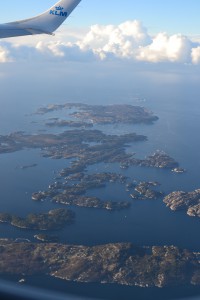
A Sense of the Landscape leaving Norway
After a three-and-a-half hour layover in Amsterdam, I boarded a flight to Atlanta, Georgia. While catching up on movies en route, I watched wistfully as Toronto passed by below, thinking that I should perhaps request a parachute. When I arrived at Hartsfield-Jackson Atlanta International, I had only half an hour to clear US customs, clear US security, and get to another gate via the Plane Train, in what is reputed the be the world’s biggest and busiest airport! I made it—just as last few passengers were boarding! Point-to-point, I was travelling for 25.5 hours, arriving home on one of the last subway trains at 1:25 a.m., rather than 4:30 the previous afternoon.
So, Bergen was an adventure, perhaps a little more of an adventure than I’d planned, but definitely an adventure worth having.
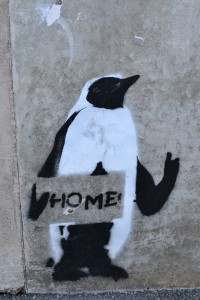
Homing Penguin graffiti
© Catherine Jenkins 2015 all rights reserved
Like this:
Like Loading...

